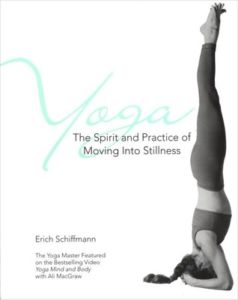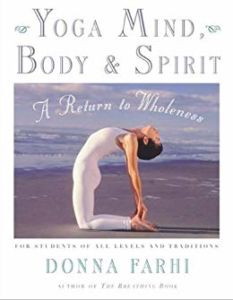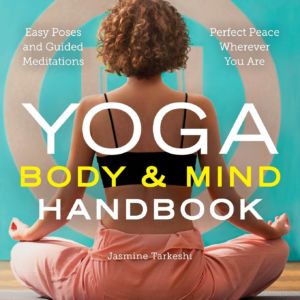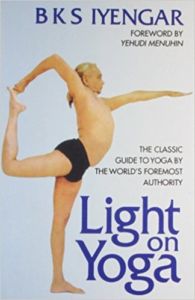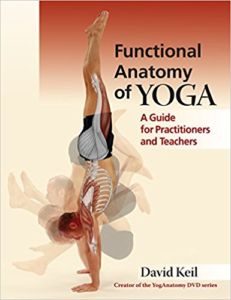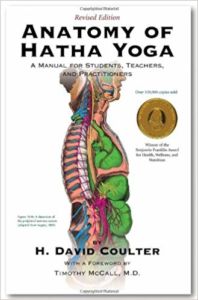Every yogi, whether you’re a beginner, immediate or advanced one, can admit that a couple of hours of reading a certain yoga book has motivated you to delve deeper and harness skills to become better in this healthy practice. These books either helped you see yoga in a new plane of view or helped you shift your time on the mat. For some, that may mean life took a 180, making you feel more invigorated, inspired, and enlightened.
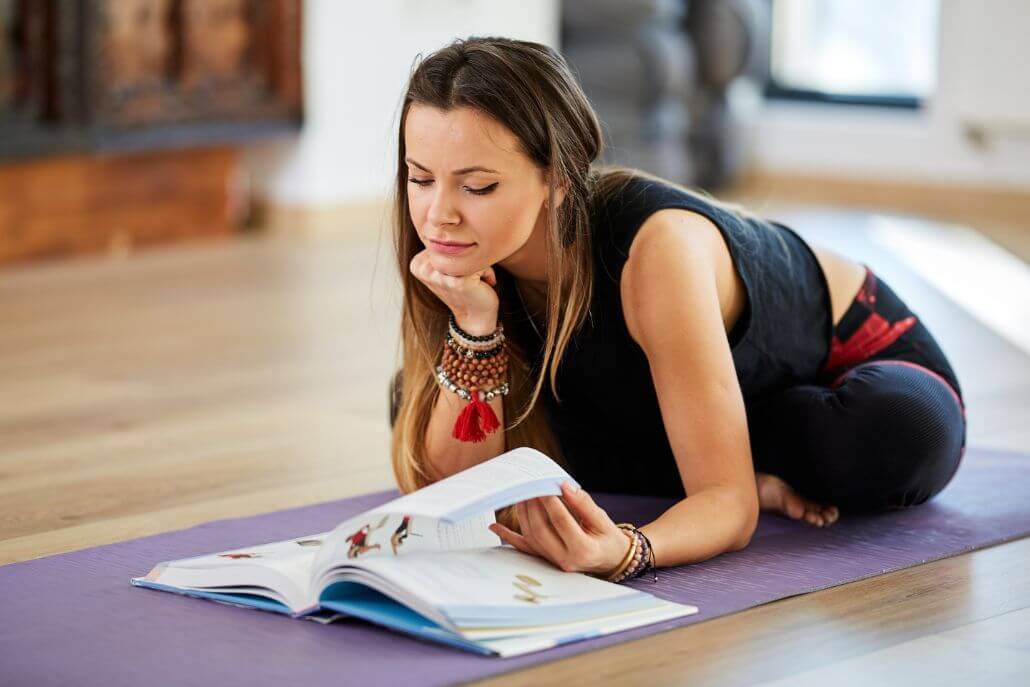
While there is a myriad of yoga books in the market to choose from, there are a few that stand out. Each of these books sheds light on the practice of yoga from different perspectives, giving you a chance to take a good look at how you approach yoga as well as how you perceive your current daily life.
In this article, we will give you a list of books that are a must-have for every yogi. Each of these books has their own take on the practice of yoga and provide you with substantial tips and information to help you get a better understanding of yoga and help you further with your journey with yoga.
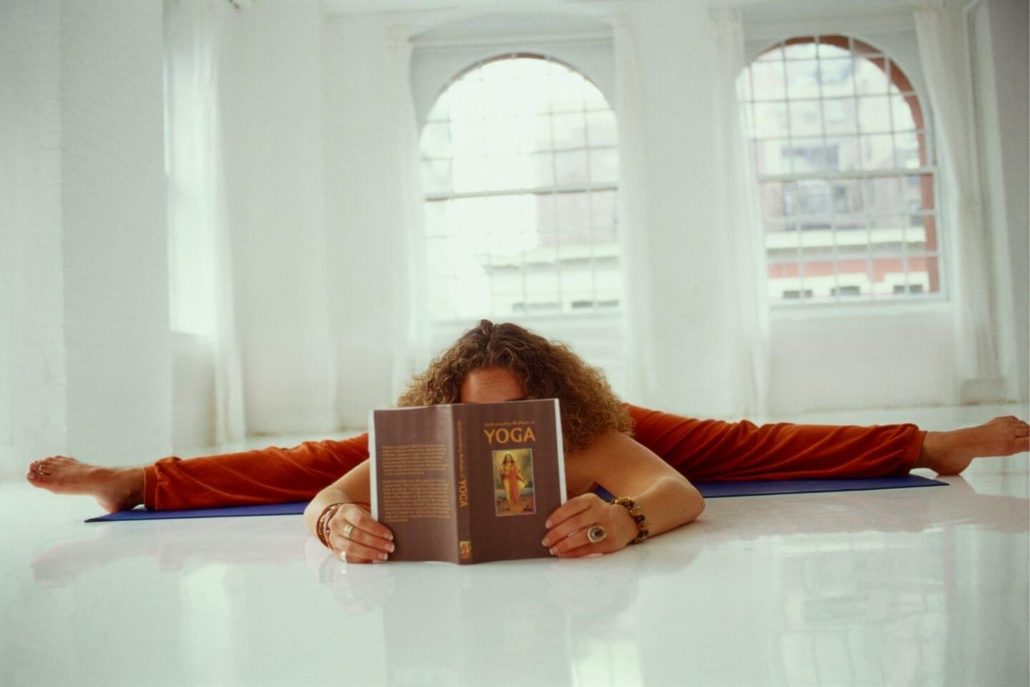
The 10 “Must Have” Books for Every Yogi
1. Yoga: The Spirit and Practice of Moving into Stillness by Erich Schiffmann
The first entry on our list is from the well-known yoga expert, Erich Schiffmann. His book, Yoga: The Spirit and Practice of Moving into Stillness, gives a tried and tested, yet somehow unique, way of teaching yoga poses. In this book, Schiffmann provides readers with a unique approach to body alignment, equipping them with gentle, yet effective yoga poses to try.
The yoga poses can be done by beginners as well as immediate-level yogis. The tutorials and step instructions provided in the book are well-detailed, helping you to understand the principles behind these poses while effectively delivering you a new way to stay centered in your practice.
Things you might like:
- Provides new and unique approaches to yoga poses
- Detailed instructions
- Talks about importance of meditation while doing yoga
- Can be done by beginners and intermediate level yogis
- Simple and straightforward
Things you might not like:
- Lack of vibrant colored photos
In this book, he also talks about the importance of meditation and alignment, highlighting the benefits of yoga in your everyday life.
2. Yoga Mind, Body & Spirit: A Return to Wholeness by Donna Farhi
The second entry on our list belongs to Donna Farhi’s “Yoga Mind, Body and Spirit: A Return to Wholeness”. Many yogis first started their practice by coming across this book. While it is already well established, we still believe that this book provides an invaluable look into the practice of yoga and why it has helped people for decades.
It has a more holistic approach to teaching yoga, talking about breathing, finding your center and support, and the importance of proper body alignment. Contrary to our first entry, it showcases these yoga positions through vibrant-looking photos while not skimping on detailed instructions.
Things you might like:
- Provides basics of yoga
- Has holistic approach to teaching yoga
- Detailed instructions
- Vibrant colored photos
- Perfect for beginners
Things you might not like:
- You prefer the traditional yoga poses
- Discusses a huge portion about asanas rather than philosophy
The book serves as a good companion for those still at the beginning phase of their yoga journey.
3. Yoga Body And Mind Handbook by Jasmine Tarkeshi
The next entry on our list is the book penned by the well-renowned yoga master, Jasmine Tarkeshi. In 2016, Tarkeshi has been making waves because of the book Yoga Body and Mind Handbook.
The book provides an easy-to-follow guide for those who are still at the start of their yoga journey, making it one of the best must-have books for beginners. What makes it better than the other yoga books on the market nowadays is that the yoga sequences also include time limits. As a result, you can juggle work and yoga because you can pattern the amount of time required to finish the sequences with your busy schedule. This will come in handy compared to books that don’t provide time limits for their yoga sequences.
Things you might like:
- Easy to follow steps for yoga beginners
- Detailed instructions
- Sequences are provided with time limits
- Comes with good-looking images
- Provides short yoga meditations you can do during breaks
Things you might not like:
- Not for advanced yogis
- Does not discuss fully the principles of the yoga sequences
To add more icing to the cake, the book provides short yoga meditations that you can do during work breaks or whenever you do not have the time to perform the full sequences. Other books do not provide these short meditations which come in handy in this day and age of fast-paced lifestyles.
4. Insight Yoga by Sarah Powers
Another worthy entry on our list is “Insight Yoga” by Sarah Powers. Among others in this list, this book doesn’t skimp out on information about yoga, presenting it through beautiful photos and vibrant visuals.
What sets this book apart from others also is that it highlights a detailed description of meridian theory and how it connects with the practice of yoga. Sarah Powers talks about this with a unique approach, one that seems like a breath of fresh air.
The main focus of the books is yin yoga and Powers provides a myriad of yoga sequences that help enhance a couple of meridians while also equipping readers with tips on how to keep their organs healthy.
Things you might like:
- Delves deeper into meridian practices
- Provides new yoga sequences
- Detailed instructions
- Equipped with vibrant looking visuals
- Provides tips on healing certain organs of the body
- Provides short and long duration sequences
- Provides seated pranayama sequences
- Provides Buddha Dharma sequences
Things you might not like:
- Does not provide hatha or vinyasa sequences
- Some sequences are difficult for beginners
In addition, the sequences are laid out in quick or longer versions to help you choose the sequence that is best suited to your time and schedule. To add icing to the cake, Powers provides this already written book with seated pranayama practice as well as the basics of Buddha dharma and its suggested meditation practices.
5. Light on Yoga by B.K.S. Iyengar
Another worthy entry on our list is “Light on Yoga” by B.K.S. Iyengar. This book effectively details the principles behind yoga, kriyas, pranayama, and bandhas. In addition to this, the book also provides simple yet easy-to-follow steps for those who want to pursue asana.
Considered to be one of the yoga greats, Iyengar channels his expertise to this book to motivate those who are serious about this way of life. The book has stood the test of time as it is one of the oldest known yoga books published. This alone is a testament to the effectiveness of the book despite several decades that passed.
Things you might like:
- Very detailed and comprehensive instructions
- Describes the origin of yoga and its principles from the early years
- Written by a well-renowned yoga master
- Explains pranayama, badha, and kriyas
Things you might not like:
- Images lack vibrancy
- Procedures are a bit outdated
If you want a modern look for your yoga books, this might not be a good choice since the images lack the colorful appeal that most yoga books nowadays offer. The visuals tend to be grainy and just not that appealing to look at. Nevertheless, if you want to learn about yoga the traditional way, this book is definitely for you.
6. The Yoga Bible by Christina Brown
Coining your book with the term “Bible” can be an overstatement. When you name your book as “Yoga Bible”, you better deliver. Fortunately, the Yoga Bible definitely delivers. With over 170 yoga poses being described in full detail, the Yoga Bible is a must-have for every yogi, especially for those who are still starting.
When it comes to pictures, it is equipped with vibrant looking, appealing visuals. In addition to this, every yoga pose is coupled with an explanation of how it improves your body and how it keeps your mind sound.
Things you might like:
- Has good looking images and visuals
- Well detailed instructions
- Comes with an explanation of the principle of each pose
- Very comprehensive
- Small, lightweight and easy to carry around
Things you might not like:
- Instructions are not straightforward
- A bulk of the discussion within the book bears more explanations than actual instructions
It has the usual discussion about the introduction of yoga, its history as well as popular, traditional poses. We believe that this book is one of the most comprehensive yoga books in years.
7. Perfectly Imperfect: The Art and Soul of Yoga Practice by Baron Baptiste
Considered also one of the greatest yoga instructors in the world, Baron Baptiste has come up with an excellent book about the basics of yoga and its practice. Baptiste is known as a humble yoga instructor with a vibrant personality. As a result, he channels these traits into his own book.
Perfectly Imperfect: The Art and Soul of Yoga Practice boasts very detailed instructions regarding yoga poses as well as shed light on its principles through history and well-presented, good-looking images. What makes Perfectly Imperfect stand above the rest is that it’s relatable and easy to understand the concepts, which can be of good use to aspiring yogis.
Things you might like:
- Incorporates basic yoga principles into everyday life
- Easy to understand
- Comes with good-looking visuals
- Well detailed instructions
Things you might not like:
- Does not really delve deep into the philosophy of yoga
- Yoga poses are limited
In addition, Baptiste also incorporates the practice of yoga into everyday life. Be it working in the office, going to school, or just relaxing around on a Sunday afternoon, you are sure to get tips on how to get the most of a healthy lifestyle while doing these tasks through reading the several tips mentioned in the book.
8. Functional Anatomy of Yoga: A Guide for Practitioners and Teachers by David Keil
Another worthy entry on our list is the book entitled, Functional Anatomy of Yoga: A Guide for Practitioners and Teachers by David Keil. To really understand the practice of yoga, you also need to have a background knowledge about the anatomy of our bodies.
This book effectively incorporates yoga poses and basic knowledge about the anatomy of our bodies. In this book, not only do you learn about the different steps of doing these yoga poses, but you also have a better grasp or understanding of how your body works and how yoga can improve its functionality. This alone sets it apart from the usual yoga books that you see in the market.
If you fear learning all those scientific terminologies or that highly technical information that you deem not that necessary, fret not, because David’s approach to teaching anatomy is easy to learn yet very comprehensive.
Things you might like:
- Incorporates the knowledge of anatomy to basic yoga poses
- Easy to learn
- Comes with excellent looking images
- Can give you added information about how your body works
- Skimps out on highly technical scientific themes
Things you might not like:
- The discussion about anatomy might bore some
- Limited discussion about yoga poses
If you want to learn more about how yoga affects your bodily functions, then this is definitely worth buying for you.
9. Anatomy of Hatha Yoga: A Manual for Students, Teachers, and Practitioners by H. David Coulter
The next entry on our list also discusses how yoga relates to certain bodily functions. Compared to the previous book mentioned, Anatomy of Hatha Yoga, contains a more detailed and comprehensive discussion about bodily functions. It talks about the principles of movement and posture, musculature, and how these yoga poses can improve or hasten certain body processes.
Things you might like:
- Relates anatomy with the basic knowledge of yoga
- Contains excellent looking images
- Very detailed discussions on anatomy
- Well descriptive instructions on doing yoga poses
Things you might not like:
- Can be highly technical which can pose a challenge to the average reader
- Too much emphasis on anatomy
Because it is more detailed and comprehensive, this might become more challenging for readers. However, any added important information is always good to fully understand why you are doing these practices in yoga.
10. Eastern Body Western Mind by Anodea Judith
Moving on from anatomy, this book delves deeper into the the psychology of yoga. This wonderful book written by Anodea Judith talks about how yoga relates to the inner psyche of an individual and how it helps keep the mind sound and peaceful.
No stranger to writing about chakras and principles of psychology, Judith relates to the readers by discussing certain epiphanies you gain as you do the practice of yoga.
Things you might like:
- Delves deeper into the psychology of yoga
- Good for self-exploration
- Help keep your mind sound and peaceful
- Relatable
Things you might not like:
- Can be a lengthy read
- Talks more about the psyche and inner meditation
It is a worthwhile read, helping you find purpose in what you are doing. In the process, you are able to live with a well-balanced, healthier mind; one that translates through your actions and is injected into everyday living.
Those are the yoga books (among others) that should be found in the bookshelves of every yogi, whether you are a beginner, intermediate, or advanced level. As we already know by now, yoga is not always what it seems. Each principle has its own philosophies behind them. Moreover, with the myriad styles of yoga present, it can be very difficult to find which style suits you.
This is why reading more about it can be very useful to help you choose which style you want to develop and learn. It is also important that you read more about the principles behind each of these styles so you understand why you are doing such sequences. You don’t want to end up hurting yourself by doing sequences that are still far beyond your reach. With the selections we made above, we hope that you are able to land the best book that answers all the questions that loom large in your mind regarding yoga.
Knowledge is power, as we all say. The more we read about yoga, the more we harness what we learn and incorporate it into our everyday lives.
In conclusion, the best yoga books are those that provide a comprehensive introduction to the practice, offer clear instructions, and are easy to follow. They should also be inspiring and motivating, providing encouragement to continue practicing. If you are new to yoga, any of the inspiring book on this list would be an excellent choice.

